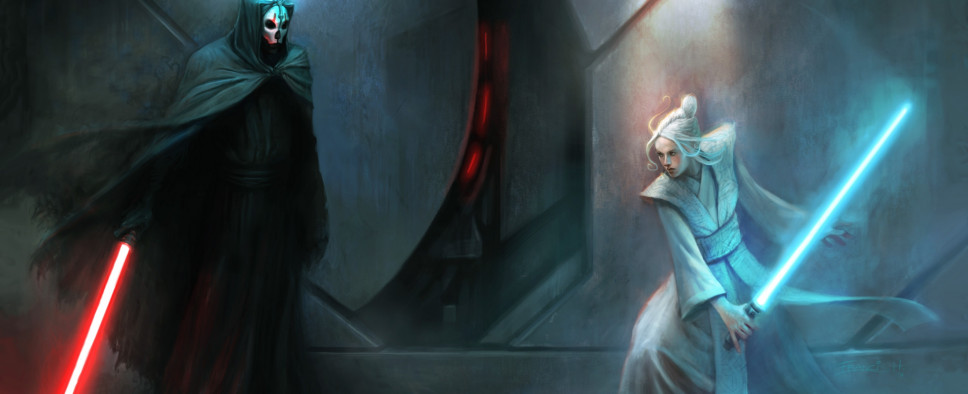Star Wars: KotOR II - The Sith Lords Retrospective
-
Category: News ArchiveHits: 5522

While I do feel that calling Kill Screen's recent article on Obsidian's Knights of the Old Republic sequel a "retrospective" is perhaps a bit reductive, I certainly believe it's worth bringing it to your attention, as it offers a really interesting analysis of the game's plot through the lens of the work of critical theorist and philosopher Giorgio Agamben. Here's an excerpt that summarizes some rather important points:
According to critical theorist Giorgio Agamben, in his book Homo Sacer: Sovereign Power and Bare Life, which takes a certain type of exile as its subject matter, human life can be divided up into two strata, which he borrows from Aristotle. First, there is zoe, life on a basic biological sense, humanity as eating, breathing, meaty things. Then, there is man as a sociopolitical creature, who engages in culture and governance, which he refers to as bios. In Agamben's conception, political life has power over zoe without necessarily including it, implicating it as a center of control without precisely legitimizing it. Zoe is included in the political order, he says, through its exclusion, through the ability of those in power to delegitimize, reduce, and destroy it.
This allows, according to Agamben, for those in power to create states of exception, places where bios and zoe are cut off from one another. These are places where life is reduced to (bare life,) torn away from any social or political meaning, just the barest facts of existence itself. Those reduced to bare life are those who sovereignty has declared as sacred, set apart but still caught up in the violence of political life. Agamben, borrowing a term from early Roman judicial theory, calls people reduced to bare life (homo sacer.)
...
The Jedi Exile is an anomaly, a breach, not unlike Agamben's homo sacer, an individual reduced to bare life, set apart made sacred by her abject separation from the world around them. As a walking wound in the Force, she is a pulsar of bare life, unraveling and suspending the normal order of things by her mere presence. By understanding the Force as an ideological construct as well as a metaphysical one, the Jedi Exile becomes precisely what Agamben claims the refugee is: a liminal space, a gap whereby the standing sociopolitical order starts to unravel. Through her, the Jedi Council reasons, the Force itself, and with it, the culture and power structures it represents, could be destroyed. To them, she is both disposable and dangerous, bare life that needs to be exiled again, this time much more permanently. They attempt to remove her from the Force entirely, destroying her in a fundamental way.This threat, however, is precisely why Kreia wants her. Kreia has been with the Jedi Exile from the start, one of the two others alive on that mining station from the start of the game. Since the beginning, she has been quietly mentoring and supporting the Exile, taking the appearance of a cynical old woman, both ex-Jedi and ex-Sith, seeking only to impart her wisdom to the Exile and see it through to the end.
Here, Kreia's true intentions are revealed. Using the Exile's wound in the Force as a starting point, Kreia wants to create further wounds in the Force, damaging it directly, with the ultimate goal of killing it entirely. No more Force, and without it, she reasons, no more Jedi, no more Sith, no more war. Where the Jedi see a threat, Kreia sees a revolutionary opportunity, a chance to break the galaxy free of the recurring cycle of cataclysmic ideological warfare. A chance to burn it all down and start over, to rethink all categories, to imagine the world without the Force without ideology.

